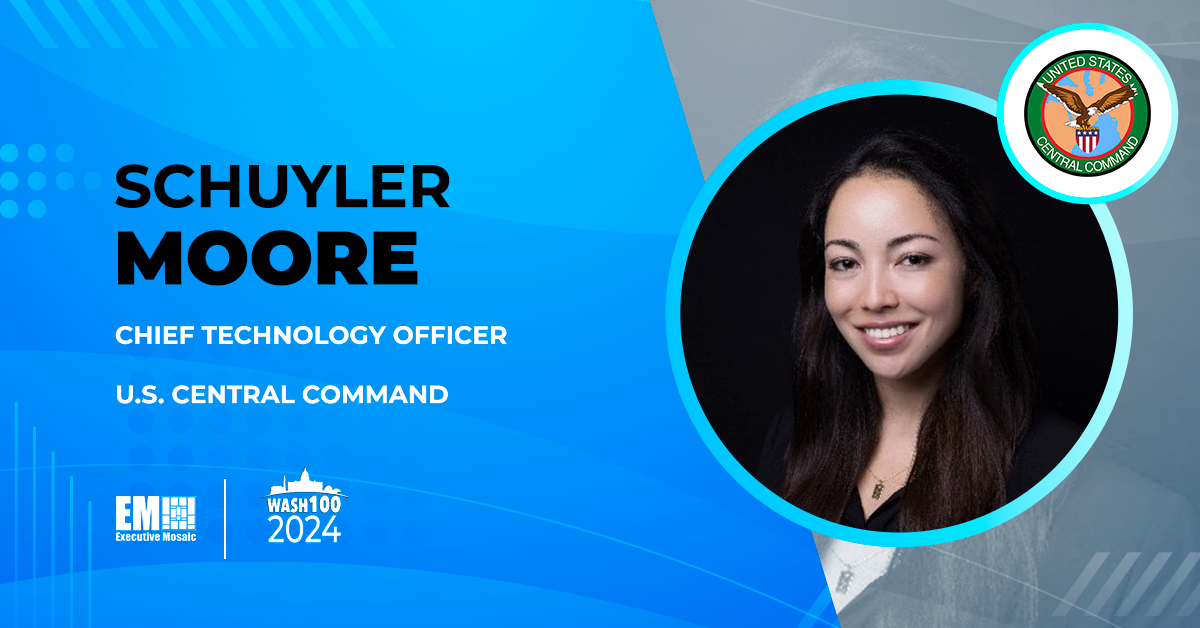Combined Joint All-Domain Command and Control, or CJADC2, is a Department of Defense-wide effort to build a digitally integrated warfighting environment for both U.S. forces and international partners.
This massive endeavor relies on connectivity, which U.S. Central Command Chief Technology Officer Schuyler Moore sees as the heart of the successful deployment of new technologies such as artificial intelligence.

Moore, a 2024 Wash100 Award winner, will participate in a panel discussion on data sharing during the Potomac Officers Club’s upcoming CJADC2-focused event, the Achieving Transformative Cooperation for National Defense Forum on March 14. To learn more and register to attend the event, click here.
A major element interwoven with all aspects of CJADC2 is data, and today, the DOD is able to collect more data than ever before. Data helps military forces better understand operational environments and offers key insights that can enhance decision making.
At the Potomac Officers Club’s Preparing for the Contested Logistics Era Forum in September, Moore said that mass amounts of data mean nothing without the ability to conduct effective analysis, a challenge that “ties into other issues, like what kinds of network infrastructure you have, how much compute you have to actually run these tools.” She views AI as a potential game-changer for data analysis.
While AI offers many capabilities, successfully implementing these tools is dependent on network infrastructure and basic connectivity, which Moore said during an April SparkCognition Government Systems event are “at the core of anything related to” AI deployment.
“From start to finish, if I’ve collected data at a certain point, and then I need to push it back to a home base where you can run analytics, and that pipe is severed, suddenly everything downstream of that stops,” Moore said.
She noted that the DOD has begun to widen its focus on AI to consider more than just algorithms.
In a piece written for Defense One with Brig. Gen. John Cogbill, deputy director of operations for CENTCOM, the pair referred to live data as “the anchor to operational reality” and the “bridge between conceptual and functional use” in real-world activities.
The command is prioritizing live data and has recently conducted multiple exercises surrounding related digital tools.
They said these efforts have “resulted in over 150 live data feeds that are now at the fingertips of anyone at the Command, as well as dozens of additional data sources updated regularly.”

Don’t miss out on the opportunity to listen to Moore’s insights at the Achieving Transformative Cooperation for National Defense Forum! Register here.
















